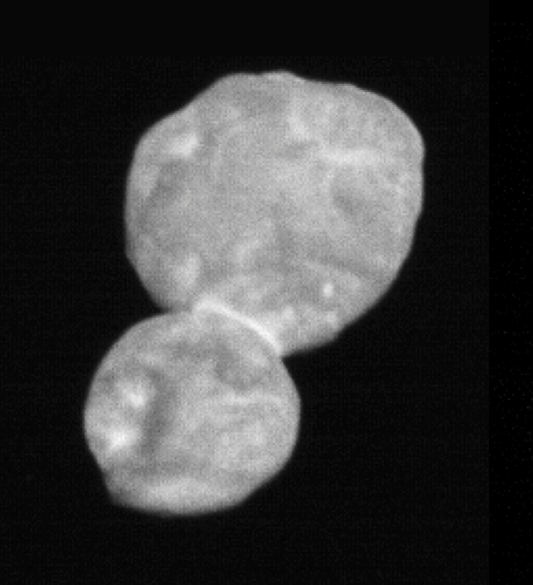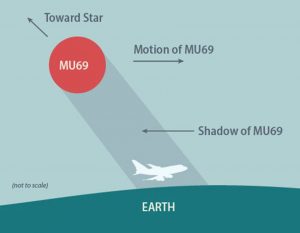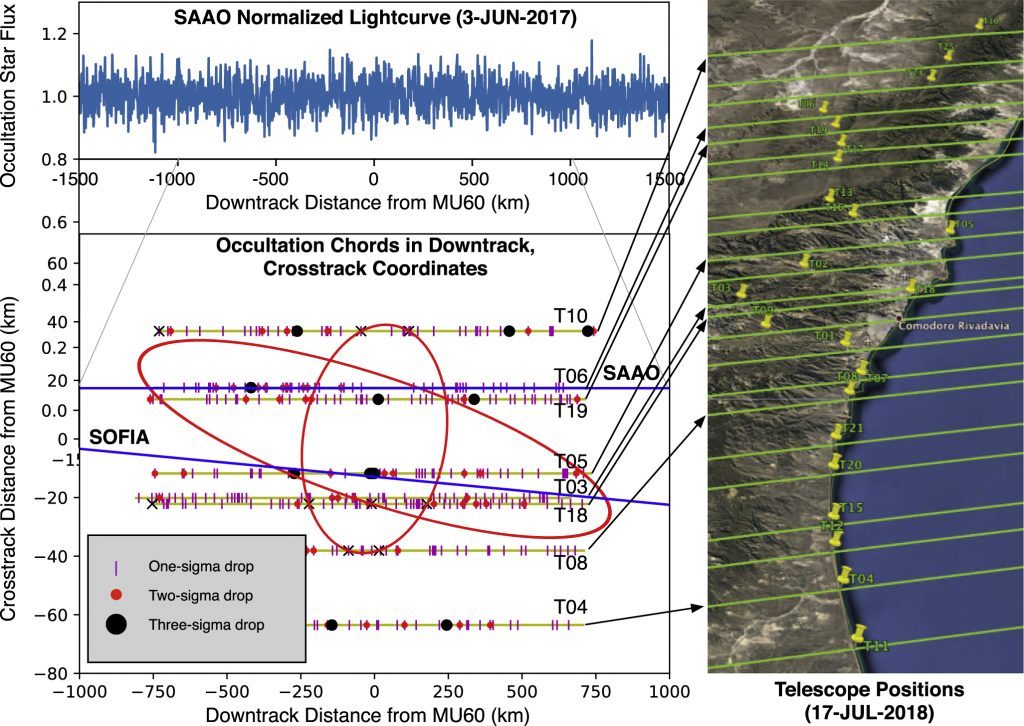
11 Jan SAAO contributes to MU69 exploration
On the 1st of January 2019, NASA’s New Horizon’s spacecraft performed a very exciting flyby of the most distant object ever explored, 2014 MU69, nicknamed Ultima Thule. MU69 is located in the Kuiper belt, the icy disk in the outer solar system that contains leftover material from the formation of the Solar System 4.5 billion years ago. In order to prepare for this flyby, and learn as much as possible about this object, astronomers at SAAO and around the world have been performing Earth-based observations from as early as 2017.

This image taken by the Long-Range Reconnaissance Imager (LORRI) is the most detailed of MU69 returned so far by the New Horizons spacecraft. It was taken at 5:01 Universal Time on January 1, 2019, just 30 minutes before closest approach from a range of 28,000 kilometres, with an original scale of 140 meters per pixel. Credit: NASA/Johns Hopkins University Applied Physics Laboratory/Southwest Research Institute
The New Horizons spacecraft, which initially visited Pluto in 2015, was then re-directed to explore an even more distant object. For this, scientists chose MU69, a body around 30km in size in the outer reaches of our solar system, and aimed to learn about its surface composition, its structure, and whether it hosts moonlets, a coma, or rings.MU69 offered a rare opportunity to learn more about objects in our outer solar system and how they may have formed.
However long before the 2019 flyby, observations of MU69 had already begun. Astronomers, using what are known as occultation observations, had already learned a fair amount about 2014 MU69. An occultation observation is performed as the object in question moved in front of a background star, briefly blocking the star’s light:

As 2014 MU69 passes in front of a background star, this occultation can be observed from Earth with carefully placed lines of ground telescopes or with SOFIA, an airborne observatory. [NASA]

The light curves produced by these occultations allowed the team to explore whether MU69 is encircled by additionally light-blocking rings. An example of candidate rings (red ellipses) ruled out by occultation observations on 17 July 2018 (yellow lines and map in the right panel). [Young et al. 2018]
The authors compared predicted light curves to the actual dimming of the background star captured during MU69’s occultations and concluded that MU69 was highly unlikely to host any rings. This lack of rings is consistent with the newly obtained low-resolution images from New Horizons’s flyby.
Citation
“Limits on a Ring System at 2014 MU69 from Recent Stellar Occultations,” Eliot F. Young et al 2018 Res. Notes AAS 2 224. https://doi.org/10.3847/2515-5172/aaf574
Artist’s impression of the New Horizons spacecraft’s flyby of Ultima Thule, a distant solar-system object. [JHUAPL/SwRI]
